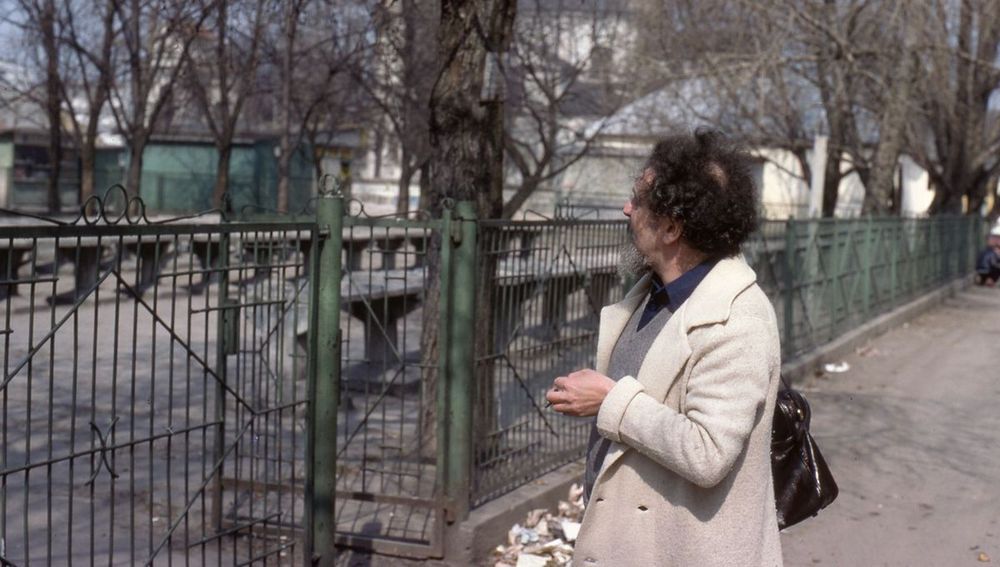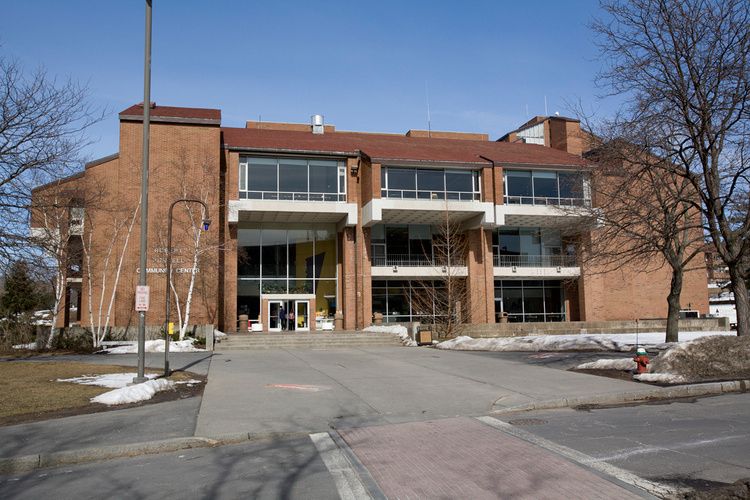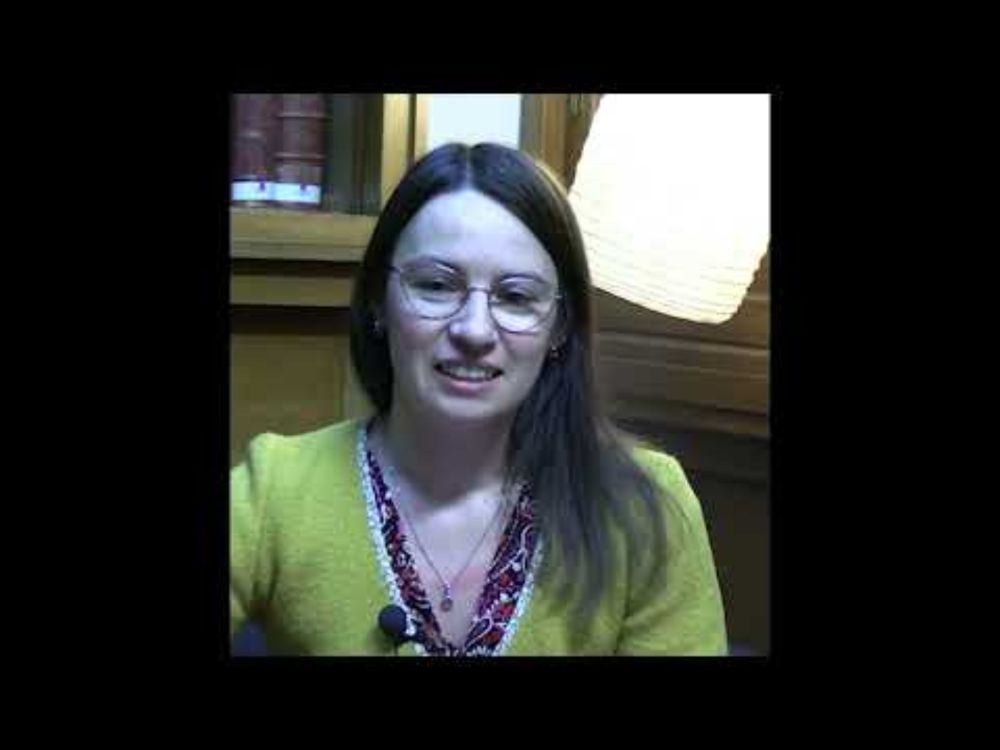
JE: Aux marges des archives administratives et policières. Nouveaux chantiers d’histoire sociale (XXe-XXIe siècles)
30 juin 2025 - Amphithéâtre de la MSH Paris Nord. @ehess.fr
Coord :
• Gabrielle Escaich
• Sacha Najman
• Tymoteusz Skowroński
• Antoine Perrier
Programme : cral.ehess.fr
19.06.2025 12:22 — 👍 4 🔁 3 💬 0 📌 0

Affiche de la première édition des Journées de la revue Mouvement social, intitulée "Aux marges des archives administratives et policières. Nouveaux chantiers d'histoire sociale (XXe-XXIe siècles), qui se tient le 30 juin 2025 dans l'amphithéâtre de la MSH Paris Nord à Saint-Denis de 9h à 19h.
Le titre apparaît en haut justifié à gauche sur un fond violet, le centre de l'image est occupé par une photographie en noir et blanc.
Journée d'étude | @revue-lms.bsky.social
💭 Comment (re)lire les archives administratives, notamment policières, pour étudier les populations marginalisées dans le cadre d’une histoire sociale ?
🗓️ lun. 30 juin, à la MSH Paris Nord
👉 www.mshparisnord.fr/event/journe...
24.06.2025 08:35 — 👍 18 🔁 13 💬 0 📌 0
📚 A WeDoData, jamais nous n’avions été sollicités pour raconter l’histoire de milliers de personnes sur plus de 100 ans, dont 4 000 personnes juives percutées par la guerre et la Shoah. Comment créer une expérience immersive au service du devoir de mémoire ?
#dataviz #histoire #pologne #Shoah
09.06.2025 10:51 — 👍 15 🔁 6 💬 1 📌 1
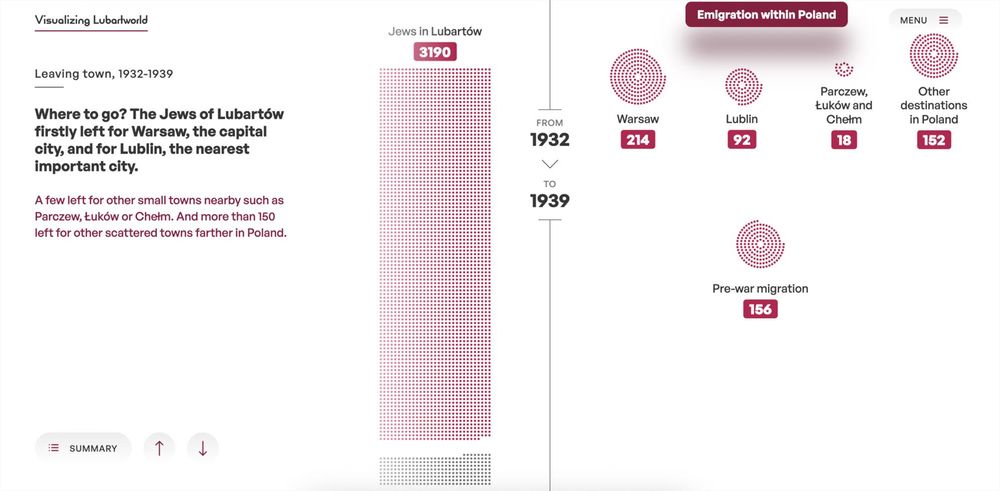
History of Lubartów’s Jewish People
Designed by French dataviz agency @wedodata.bsky.social, the scrollytelling special, Visualizing Lubartworld, traced the “collective biography” of the Jewish population in the Polish village of Lubartów throughout the 20th century.
https://twp.ai/9PS6DU
30.05.2025 17:27 — 👍 7 🔁 4 💬 1 📌 1
@revue-lms.bsky.social @mshparisnord.bsky.social @lab-iris.bsky.social @cral.ehess.fr
10.06.2025 09:05 — 👍 0 🔁 0 💬 0 📌 0
Parler de dénaturalisations et de Vichy aujourd'hui aux États-Unis est particulièrement d'actualité. Face aux épreuves, retenons de Marc Bloch que «l'ignorance du passé ne se borne pas à nuire à la compréhension du présent ; elle compromet, dans le présent, l'action même.» (Apologie pour l'histoire)
28.05.2025 20:59 — 👍 1 🔁 1 💬 0 📌 0
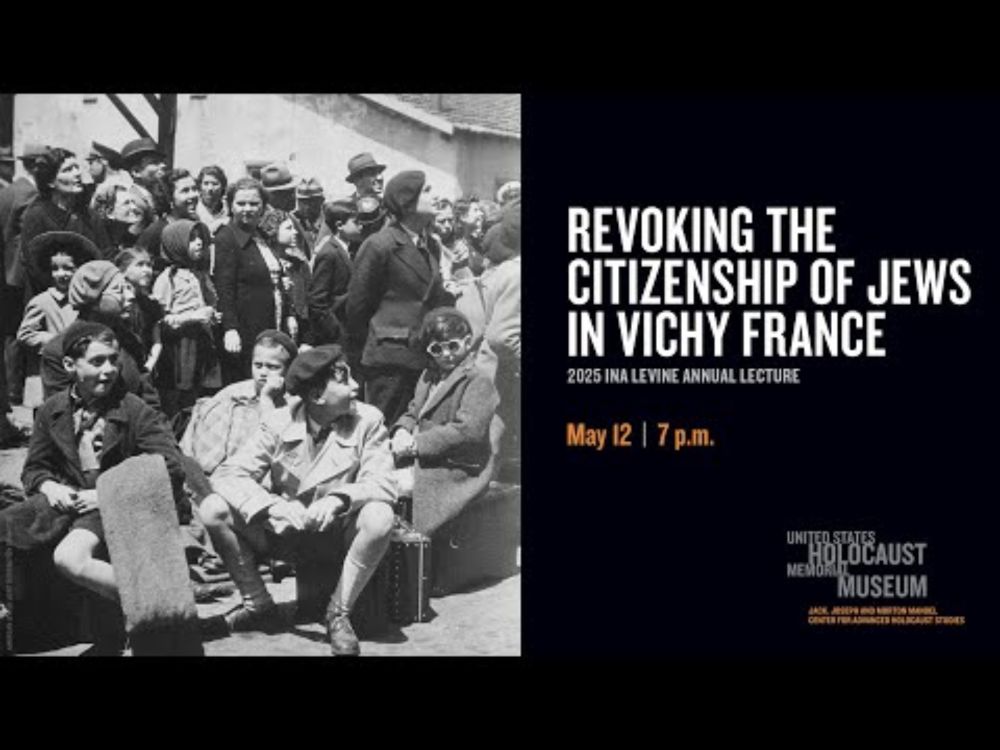
Revoking the Citizenship of Jews in Vichy France
YouTube video by United States Holocaust Memorial Museum
Il y a deux semaines, Claire Zalc était invitée à donner la conférence annuelle Ina Levine à l'Holocaust Memorial de Washington D.C. Vous pouvez retrouver la captation de la conférence ici :
www.youtube.com/live/vTt5MTA...
28.05.2025 20:59 — 👍 4 🔁 2 💬 1 📌 0
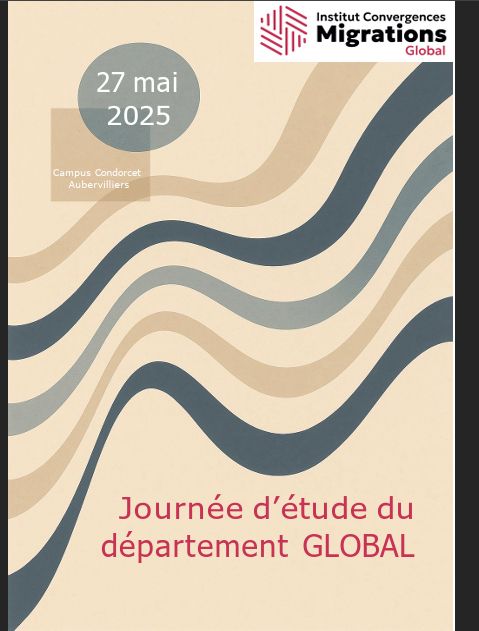
📆 Journée d’étude du département Global
@icmigrations.bsky.social
27 mai 2025, 9h30–17h30
Salle 0.019, bât. Recherche Sud
@campuscondorcet.bsky.social
Aubervilliers
www.icmigrations.cnrs.fr/2025/04/15/c...
Avec, pour l'IHMC, des interventions d'A. Dalachanis et l'équipe de @lubartworld.bsky.social
23.05.2025 08:08 — 👍 7 🔁 4 💬 1 📌 1

Poster of the "Migration and the Holocaust across the world in the 20th century". June 6th, 2025.
Save the date 🗓️ ! Join us in two weeks at the conference “Migration and the Holocaust across the world in the 20th century” !
📍 Friday, June 6, 2025, 9am-5pm, at ENS Paris, Dussane Room, 45 rue d'Ulm.
@normalesup.bsky.social @ihmc.bsky.social @ehess.fr @erc.europa.eu @pierresalmon.bsky.social
21.05.2025 17:24 — 👍 8 🔁 3 💬 1 📌 0
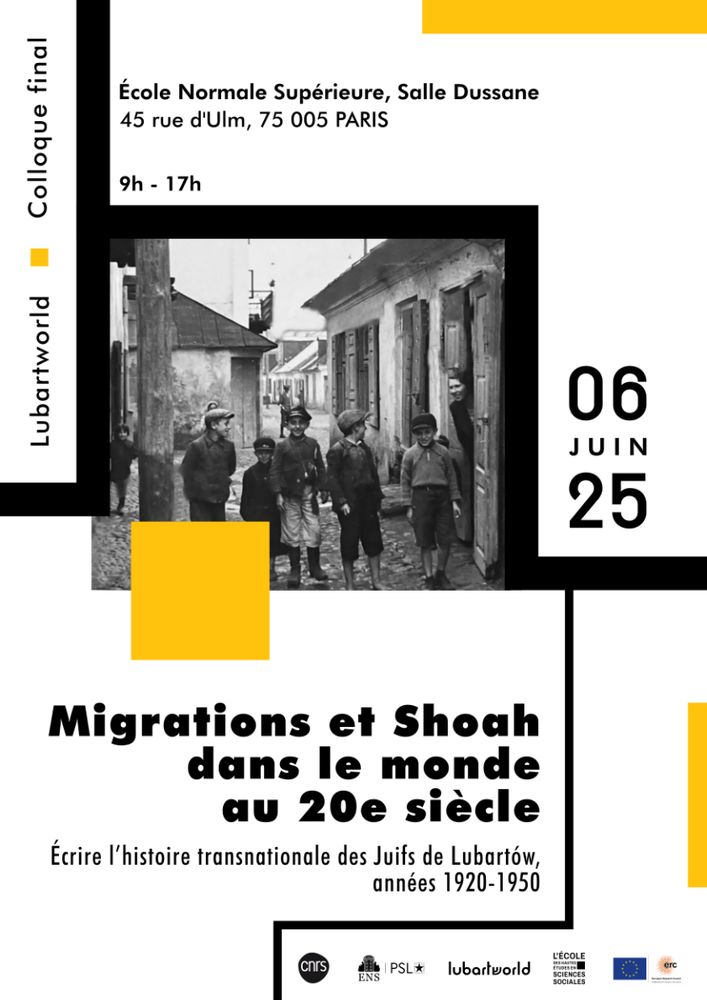
Affiche du colloque : Migrations et Shoah dans le monde au 20e siècle. 6 juin 2025.
Save the date 🗓️ Rejoignez-nous dans deux semaines au colloque « Migrations et Shoah dans le monde au 20e siècle » !
📍 Vendredi 6 juin 2025, 9h–17h, à l'ENS Paris, salle Dussane, 45 rue d’Ulm, Paris 5.
@normalesup.bsky.social @ihmc.bsky.social @ehess.fr @erc.europa.eu @pierresalmon.bsky.social
21.05.2025 17:09 — 👍 23 🔁 15 💬 1 📌 0

Visualizing Lubartworld
This is the history of the Jews from a small Polish town from the 1930s to the 1950s, caught between migration and persecution
An amazing research project, a global microhistory of Lubartów, traces Jewish stories of persecution and migration from the 1930s to the 1950s. Check it out. The project is led by a brilliant team of researchers such as Claire Zalc, @antonperdoncin.bsky.social, @gabrielleescaich.bsky.social, et al.
20.05.2025 17:15 — 👍 4 🔁 2 💬 0 📌 0
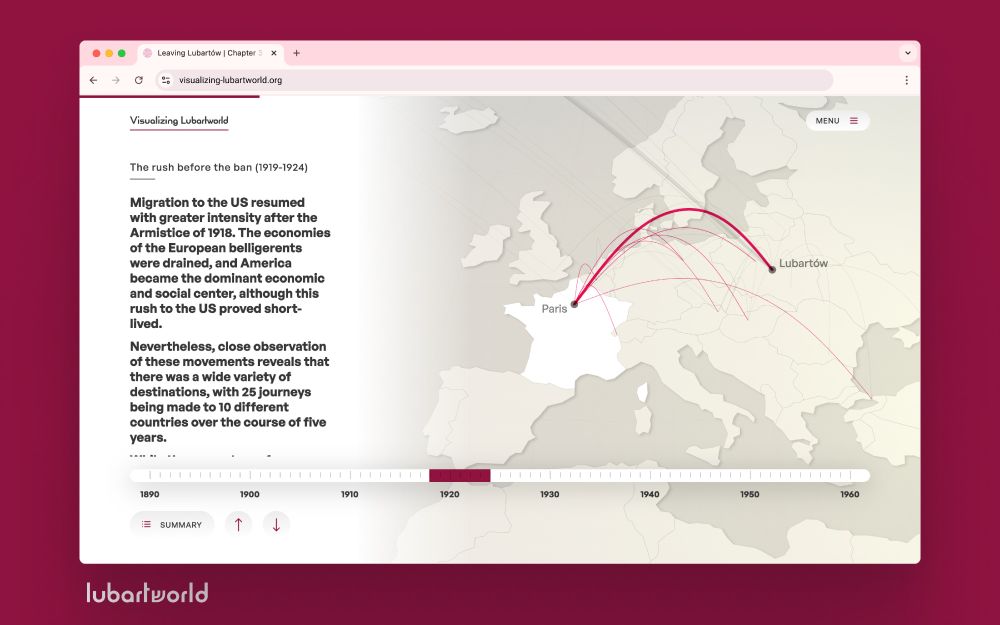
The rush before the ban (1919-1924) The rush before the ban (1919-1924)
Migration to the US resumed with greater intensity after the Armistice of 1918. The economies of the European belligerents were drained, and America became the dominant economic and social center, although this rush to the US proved short-lived.
Nevertheless, close observation of these movements reveals that there was a wide variety of destinations, with 25 journeys being made to 10 different countries over the course of five years.
While three quarters of international journeys were headed toward the US, France also welcomed Lubartów Jews at an increasing rate.
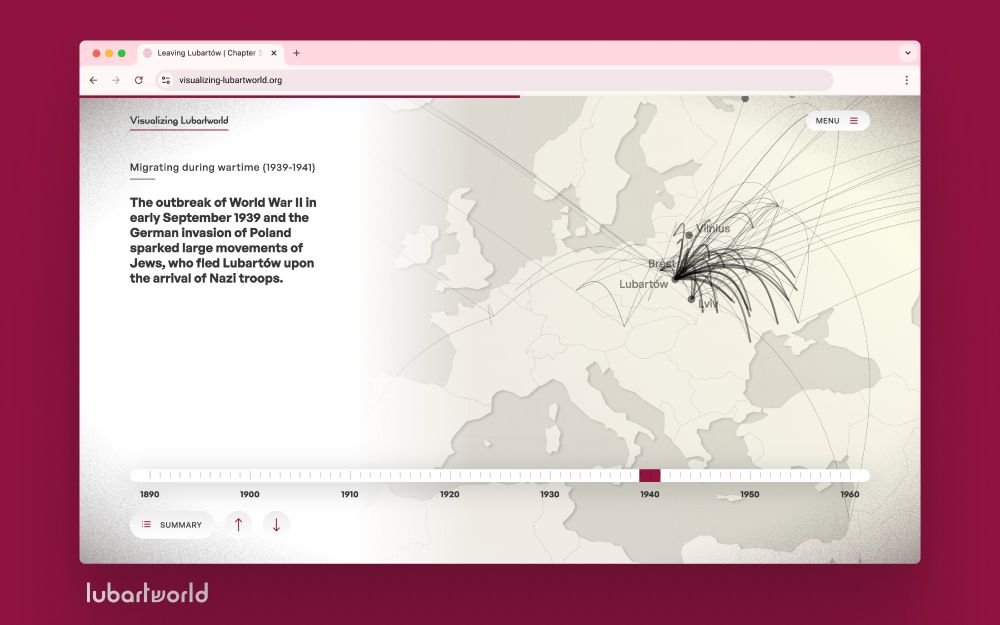
Migrating during wartime (1939-1941) Migrating during wartime (1939-1941)
The outbreak of World War II in early September 1939 and the German invasion of Poland sparked large movements of Jews, who fled Lubartów upon the arrival of Nazi troops.
How can we combine the history of the Holocaust with the history of migrations?
More on visualizing-lubartworld.org !
16.05.2025 16:06 — 👍 5 🔁 4 💬 0 📌 0

Visualizing Lubartworld
This is the history of the Jews from a small Polish town from the 1930s to the 1950s, caught between migration and persecution
How can we observe segregation at the scale of Lubartów, a small town in eastern Poland, from the 1930s to the 1950s? In the face of anti-Jewish persecution and the Holocaust, who among the town’s residents leaves the region 🧵🌍? visualizing-lubartworld.org
15.05.2025 21:13 — 👍 11 🔁 12 💬 1 📌 0

Visualizing Lubartworld
This is the history of the Jews from a small Polish town from the 1930s to the 1950s, caught between migration and persecution
Comment observer la ségrégation à l’échelle de Lubartów, petite ville de l’est de la Pologne, des années 1930 aux années 1950 ? Face aux persécutions anti-juives et à la Shoah, qui parmi les habitant·es de la ville quitte la région 🧵🌍? visualizing-lubartworld.org
15.05.2025 21:29 — 👍 19 🔁 17 💬 1 📌 1
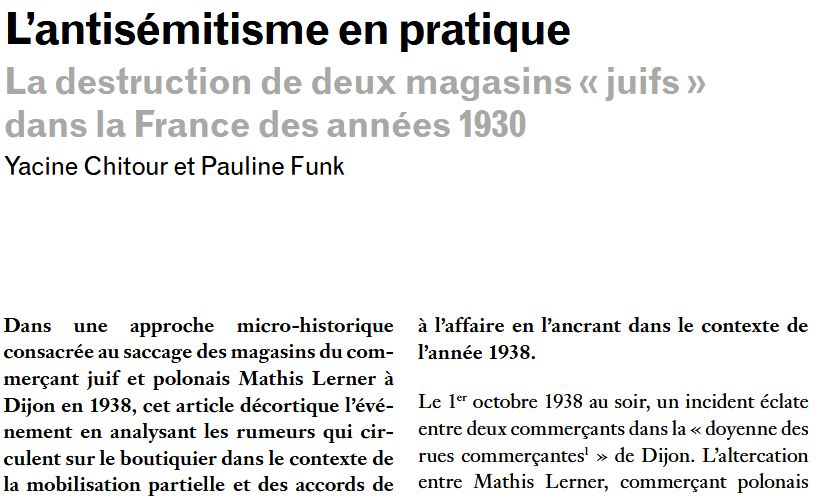
L’antisémitisme en pratique
La destruction de deux magasins « juifs » dans la France des années 1930
Yacine Chitour et Pauline Funk
Dans une approche micro-historique consacrée au saccage des magasins du commerçant juif et polonais Mathis Lerner à Dijon en 1938, cet article décortique l’événement en analysant les rumeurs qui circulent sur le boutiquier dans le contexte de la mobilisation partielle et des accords de Munich.
Lerner n’aurait-il pas crié « Heil Hitler ! » au nez des mobilisés de septembre 1938 ? Les auteurs étudient également les sources de l’enquête policière, comme les dépositions des accusés, et retracent les suites de cette affaire, notamment l’improbable expulsion de Lerner du territoire français, malgré son statut de victime, et la trajectoire transnationale de ce fait divers, particulièrement de l’autre côté du Rhin, où il est présenté comme un exemple de la résistance des commerçants français à l’implantation des Juifs dans ce secteur économique. Pogrom anti-juif ou prodrome de l’antisémitisme des années 1940 ? Cet article redonne toute sa valeur à l’affaire en l’ancrant dans le contexte de l’année 1938.
Le 1er octobre 1938 au soir, un incident éclate entre deux commerçants dans la « doyenne des rues commerçantes » de Dijon. L’altercation entre Mathis Lerner, commerçant polonais établi 29-31 rue du Bourg, et Gabriel Lhuillier, qui tient boutique en face, se termine par le saccage du Petit Soldeur et d’À la Parisienne, les deux enseignes de Mathis Lerner et de son épouse Jenta Obarzanek. À minuit passé, l’intervention de la gendarmerie puis de l’armée conduit à l’évacuation des Lerner, après la destruction totale de leurs commerces.
“Antisemitism in Practice: The Destruction of Two 'Jewish' Stores in 1930s France”
by Yacine Chitour and Pauline Funk
09.05.2025 18:09 — 👍 6 🔁 3 💬 1 📌 0
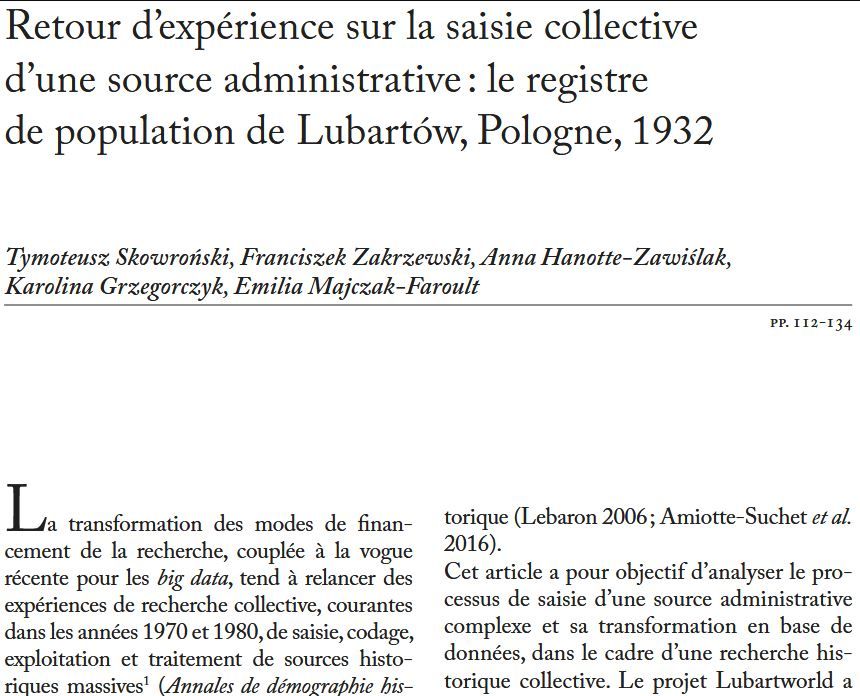
"Retour d’expérience sur la saisie collective d’une source administrative : le registre de population de Lubartów, Pologne, 1932" (Genèses, 2021)
Par Tymoteusz Skowroński, Franciszek Zakrzewski, Anna Hanotte-Zawiślak, Karolina Grzegorczyk et Emilia Majczak-Faroult
05.05.2025 15:00 — 👍 4 🔁 2 💬 1 📌 0
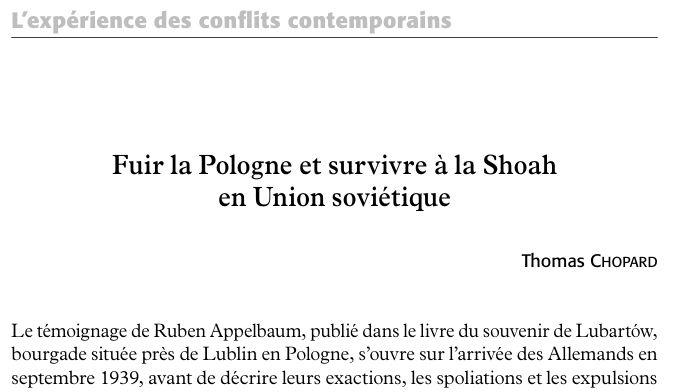
"Fleeing Poland and surviving the Holocaust in the Soviet Union" by @thomaschopard.bsky.social
"This article analyses the flight and survival of Polish Jews during the Second World War in the Soviet Union, which was the main place of survival for Polish Jews."
01.05.2025 16:06 — 👍 5 🔁 4 💬 1 📌 0
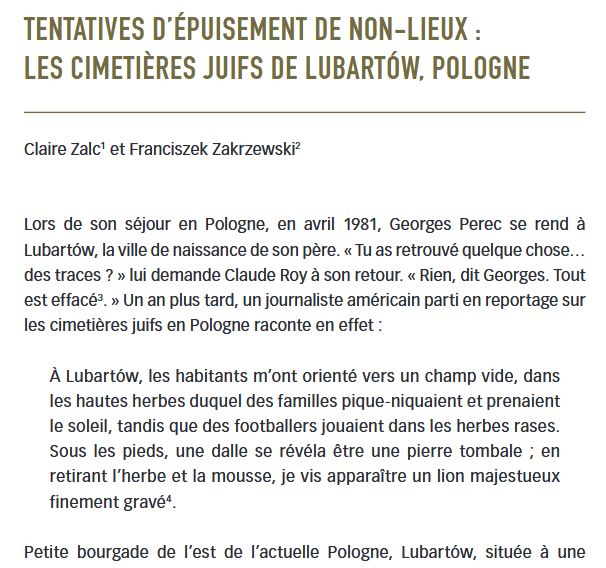
"During his travels in Poland in April 1981, Georges Perec visited Lubartów, his father’s birthplace. After he returned, Claude Roy asked, 'Did you find anything? Is there any sign?' 'Nothing,' said Georges. 'It’s all been wiped away.'"
By Claire Zalc and Franciszek Zakrzewski.
28.04.2025 16:05 — 👍 6 🔁 5 💬 1 📌 0
YouTube video by Centre d'histoire du XIXe siècle
"L’alcool(isme) et les femmes. Une histoire de discours" par Victoria Afanasyeva
[Vidéo] Des livres à découvrir ! "L’alcool(isme) et les femmes. Une histoire de discours" par Victoria Afanasyeva
www.youtube.com/watch?v=0Lsl...
07.04.2025 08:18 — 👍 5 🔁 4 💬 0 📌 0
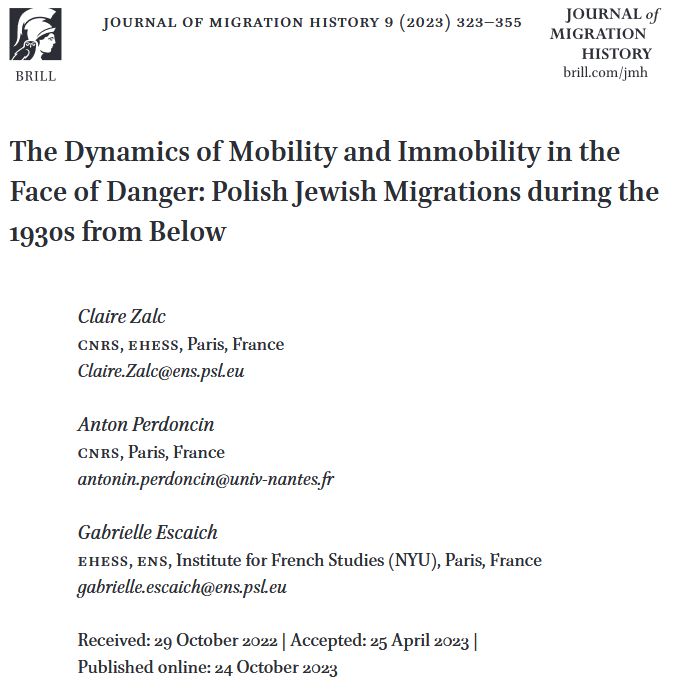
The Dynamics of Mobility and Immobility in the Face of Danger: Polish Jewish Migrations during the 1930s from Below
In: Journal of Migration History
Authors: Claire Zalc, Anton Perdoncin, and Gabrielle Escaich
Online Publication Date: 24 Oct 2023
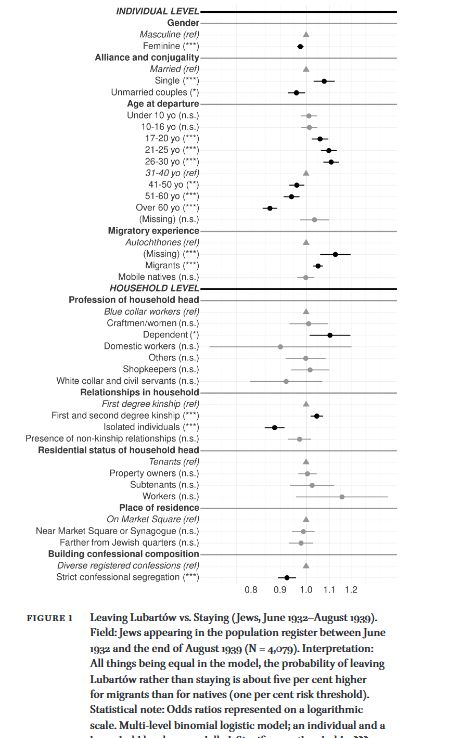
Figure 1. Leaving Lubartów vs. Staying (Jews, June 1932–August 1939).
Field: Jews appearing in the population register between June
1932 and the end of August 1939 (N = 4,079). Interpretation:
All things being equal in the model, the probability of leaving
Lubartów rather than staying is about five per cent higher
for migrants than for natives (one per cent risk threshold).
Statistical note: Odds ratios represented on a logarithmic
scale. Multi-level binomial logistic model; an individual and a
household level are modelled. Significance thresholds: *** 1 per
cent, ** 5 per cent, * 10 per cent.
How does antisemitic violence affect the dynamics of mobility among Jewish and Catholic inhabitants from a small Polish town during the interwar period ? 👀
Check out our paper in the Journal of Migration History: 'The Dynamics of Mobility and Immobility in the Face of Danger'
23.04.2025 18:34 — 👍 5 🔁 3 💬 1 📌 0
Pourquoi Lubartów ? - Lubartworld
Visit the post for more.
Pourquoi donc Lubartów ?
Par Claire Zalc.
Lubartów n'est pas le "sthtetl moyen". « Le projet de recherche s’attèle à suivre, dans la durée, les parcours de l’ensemble des habitants juifs d’une localité de Pologne. Mais pourquoi Lubartów ? »
La suite ici : lubartworld.cnrs.fr/pourquoi-lub...
19.04.2025 15:49 — 👍 7 🔁 4 💬 0 📌 0
Why Lubartów ? - Lubartworld
Visit the post for more.
Why Lubartów ?
by Claire Zalc
Lubartów is not the “average shtetl“. “The Lubartworld project reconstructs the itineraries of all Jewish inhabitants from the small Polish town of Lubartów. But why Lubartów? I chose this village for four main reasons.“
More here: lubartworld.cnrs.fr/en/why-lubar...
19.04.2025 15:52 — 👍 6 🔁 3 💬 0 📌 0
Lubartworld is on BlueSky 🌐!
The Lubartworld project combines a transnational history perspective with a microhistorical methodology by reconstructing the individual trajectories of every Jewish inhabitant from the Polish village of Lubartów between the early 1920s and the early 1950s...
11.04.2025 17:02 — 👍 17 🔁 15 💬 1 📌 0
Professor of Medical Anthropology (St Andrews) | Global War Against the Rat project, zoonoses, plague, epidemics, history of colonial medicine, animal studies & visual culture
https://www.st-andrews.ac.uk/social-anthropology/people/cl1
Association qui milite pour une expansion internationale du langage cartographique ! Figurés ponctuels linéaires et de surface de tous pays suivez nous !
... sinon on organise des concours de cartographie pour vos élèves !
https://www.concourscarto.com/
MCF en histoire contemporaine (ENS-PSL - IHMC)
Guerre d'Espagne (1936-1939), trafic d'armes, histoire transnationale
Compte personnel
Doctoral Researcher at the Max Planck Institute for the Study of Societies
Interested in family, wealth and social inequality in contemporary societies. Passionate about qualitative research methods and methodologies
Senior Lecturer (Assoc. Prof.) at Uni Manchester | History, Mapping & Data | lucascholz.com
—————————————————————
Quantifications, statistiques, chiffres, datas & sociétés
CERLIS - Université Paris Cité - IUF
📖 𝘾𝙝𝙞𝙛𝙛𝙧𝙚 (2023, Anamosa)
📖 𝙇'𝙚𝙢𝙥𝙞𝙧𝙚 𝙙𝙚𝙨 𝙘𝙝𝙞𝙛𝙛𝙧𝙚𝙨. 𝙐𝙣 𝙨𝙤𝙘𝙞𝙤𝙡𝙤𝙜𝙞𝙚 𝙙𝙚 𝙡𝙖 𝙦𝙪𝙖𝙣𝙩𝙞𝙛𝙞𝙘𝙖𝙩𝙞𝙤𝙣 (2020, Armand Colin)
—————————————————————
L'agence Dataviz 🇫🇷 / nous vous aidons à raconter vos données
// #data #viz & #dataviz
// Newsletter 💌 Buena Vista Data Club 💌 http://wedodata.fr/newsletter
Historienne.
Enseignante, post-doc Fondation pour la Mémoire de la Shoah.
Guerres et génocides - politisation enfance et jeunesse - migrations - transmissions intergénérationnelles
Maître de conférences - Sciences Po Strasbourg 🏳️🌈
Violences de masse | Afrique contemporaine | Rwanda | Génocide des Tutsi
Washington-based historian, writer, translator. Yugoslav antifascist. Jew.
Histoire & sociologie (ENS/EHESS/Uni Heidelberg) - Les interné•es civil•es des camps de triage français durant la Grande Guerre
Fostering sociological thinking about families. Bringing together those who want to learn & teach about families. www.asafamilysection.com
Social scientist, Paris-Dauphine University, Institut Universitaire de France. Economic sociology, sociolegal studies, family, gender, social classes, wealth inequality, elite studies.
New project: gender and wealth accumulation in Europe
https://centrehistoire19esiecle.pantheonsorbonne.fr/
Créée en juin 2013, l'AFHMT entend promouvoir les recherches qui s’effectuent dans ce domaine.
MCF en histoire contemporaine à l'université de Lorraine (Nancy) / Lecturer in #history @univlorraine.bsky.social
#exploration #imperialism #Germancolonialism #EastAfrica #Kilimanjaro #19thCentury
Sociologue
Histoire sociale et politique
Ouvrages sur le mouvement ouvrier
INRAE IRISSO Paris Dauphine
PhD in History. Sexuality, gender, contraception, sex market (19th-20th centuries, France). Postdoctoral researcher @Cermes3. Current research: history of vaginismus.
I have a PhD in history and I believe that economic history is sexy (or at least can be). Max Weber fellow @eui-history.bsky.social
















